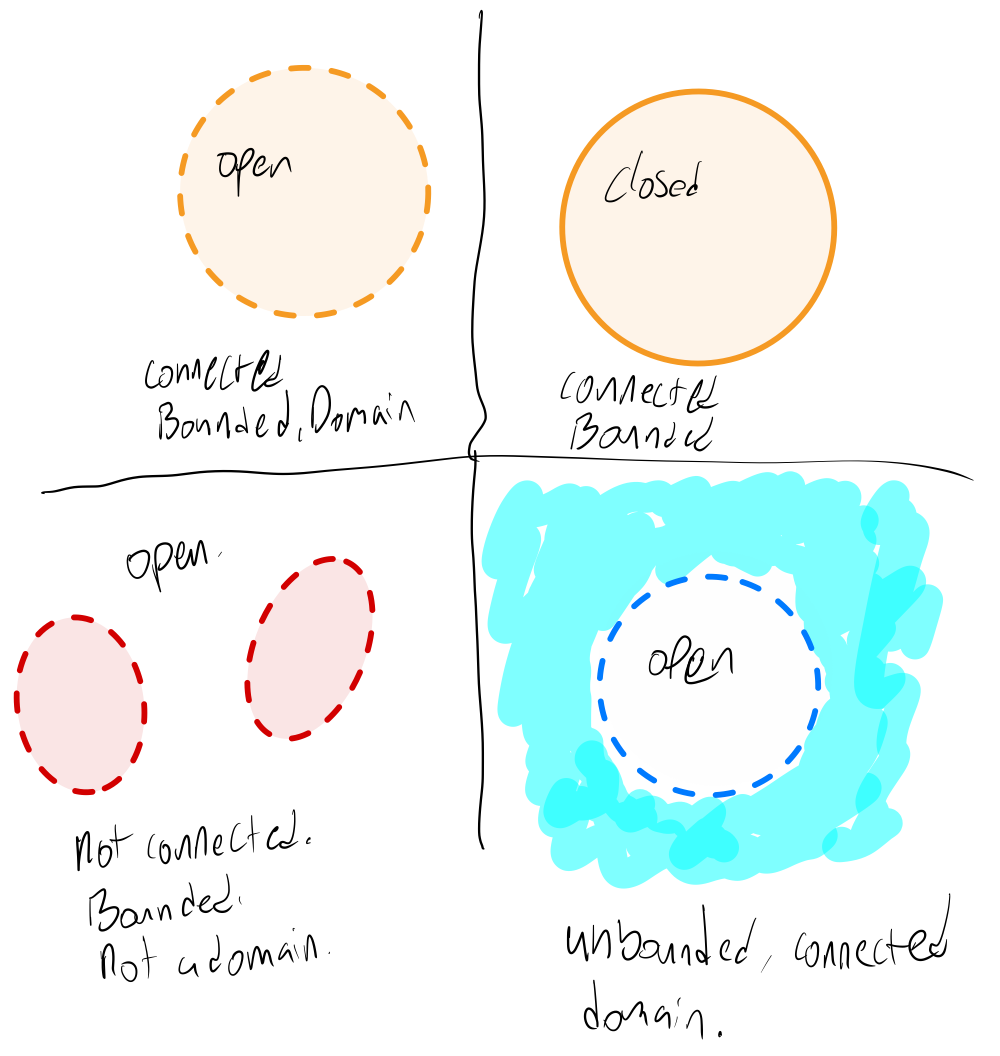Regions of the Complex Plane
An -neighborhood of a point is the set of all complex numbers satisfying
This is the set of all complex numbers interior to a circle of radius and center , but not including the circumference of the circle.
A point of a set of comlex numbers is called an interior point of if there exists an -neighborhood of that contains only points of .
On the other hand, is a boundary point of if every -neighborhood of contains at least one point of and at least one point not in . The set of all boundary points of a set is called the boundary of .
A set of complex numbers is said to be open if all points in are interior points. Alternatively, a set is open if it contains none of its boundary points.
A set of complex numbers is said to be closed if it contains all of its boundary points.
Note that a set can be both open and closed! Both the empty set and are both open and closed.
A set of complex numbers is said to be bounded if there exists a positive (real) number such that for all in . This means that a set is bounded if all its points fit within a circle of finite radius. A set that is not bounded is said to be unbounded.
A set is said to be connected if every pair of points in can be joined by a finite number of line segments joined end to end that lie entirely within .
A domain is an open connected set. Note that this is not the same as a domain of definition of a function.
In the images below, a dashed line represents a boundary that is not included the in the set, while a solid line represents a boundary that is included in the set.
Squiggly blue highlighter indicates the set goes on forever and the party never ends!

